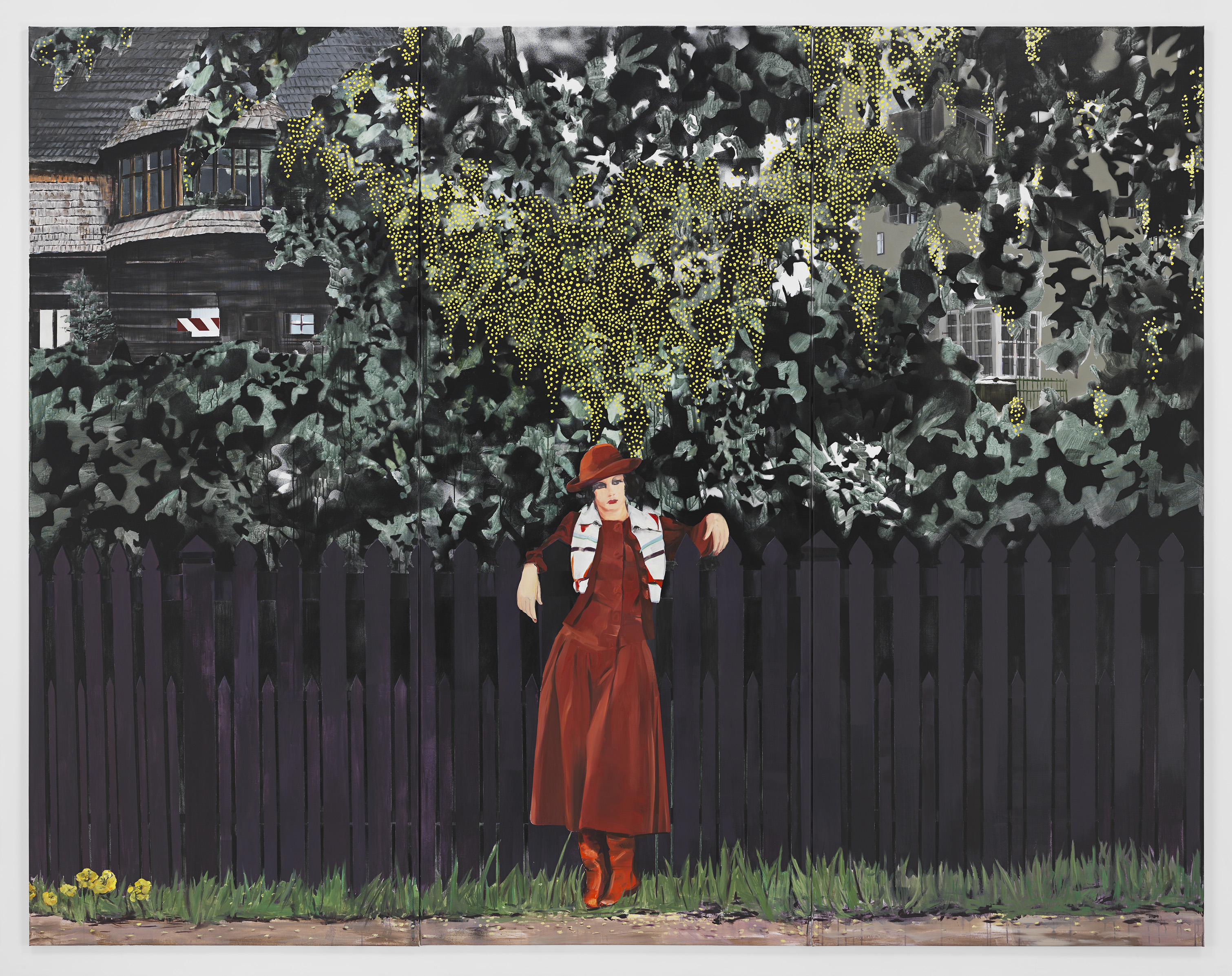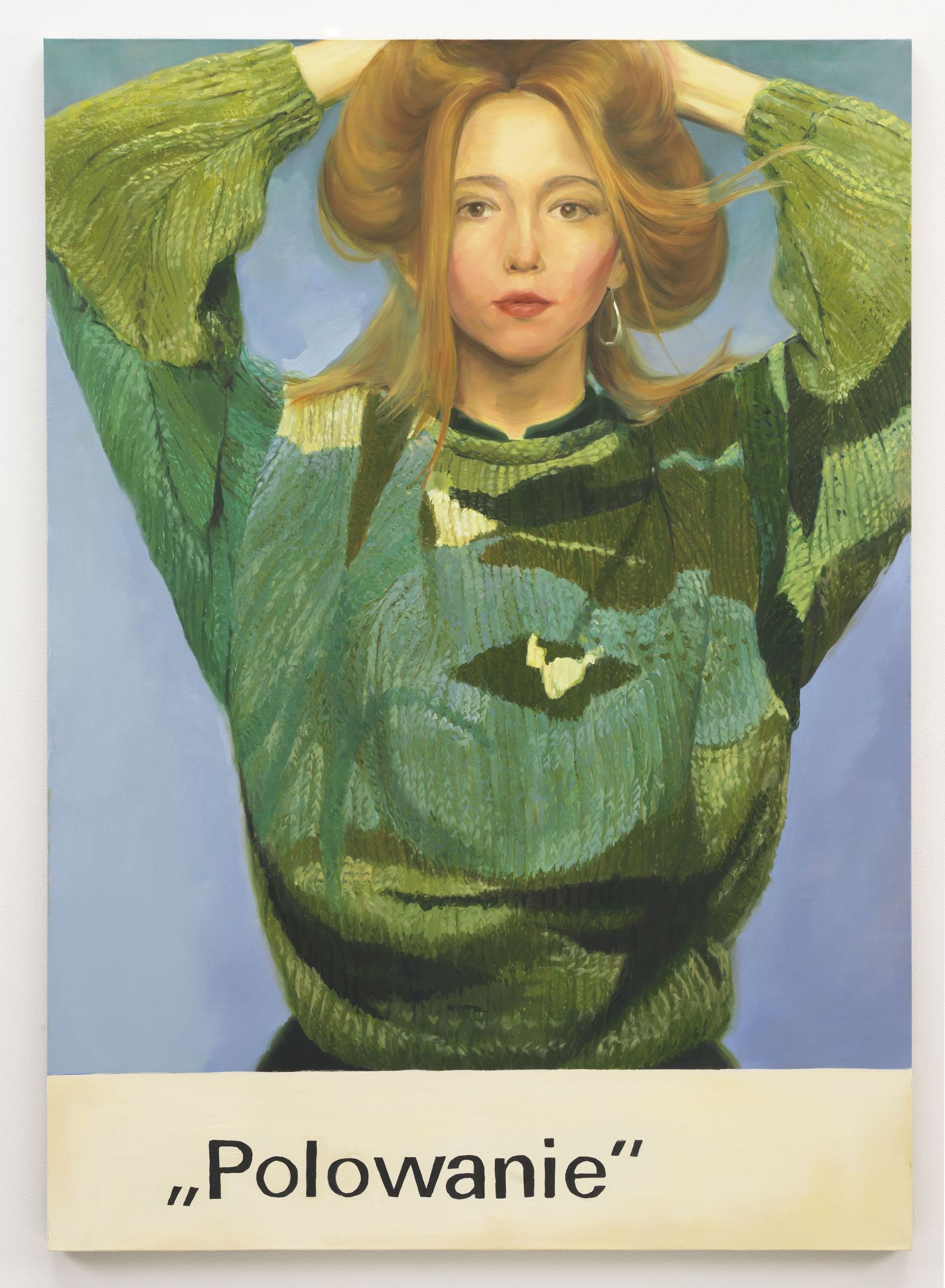Today, thanks to Metro Pictures gallery we have a chance to show you a piece created by contemporary Polish artist Paulina Ołowska. Enjoy!
A woman in a red and white outfit leans on a wooden fence. Over her head, the wisteria's tree flowers twinkle like fireflies. Deeper in the background, there is one specific building from Rabka-Zdrój, where Paulina Ołowska executed all her new paintings. When the artist moved there a couple of years ago, she made some meaningful yet discreet interventions intown. Like, restoring a neon sign "Gazda" (restoring forgotten neons is one of her trademarks). Or transforming Villa Kadenówka, an old mansion, built in a regional style with a modernist touch, into a kind of cultural centre. She hosted annual gatherings of befriended artists there. They were not only making their pieces, but also, for example, picking mushrooms. Kadenówka is the very building in the background of Wisteria. Ołowska, undoubtedly a very skillful painter, uses a bit different style each time, according to her needs. In her newest works, she approaches her themes by a manner close to Les Nabis, a group of French artists from the late XIX century. They were a group of painters influenced mostly by Gauguin. Nabis left Paris to live in the countryside. But what seems to be equally important for Ołowska, is their ideological background. The name of the French group comes from the Hebrew and Arab word "nabi", which means "prophet". Ołowska's women are kind of folk and feminine counterparts to a masculine group of "prophets".
They resemble, in a way, Ołowska's earlier series of paintings, which were also presented in Metro Pictures gallery. It that series, she painted girls dressed in sweaters made by themselves, based on an outfits seen in western fashion magazines. That DIY attitude was an answer to the scarcity of consumer goods behind the Iron Curtain in the Cold War era. What unites all of Ołowska's heroines is a celebration of women's empowerment—be it by exploring sophisticated scientific knowledge, or knitting colorful sweaters.
- Piotr Policht


 Paulina Ołowska
Paulina Ołowska